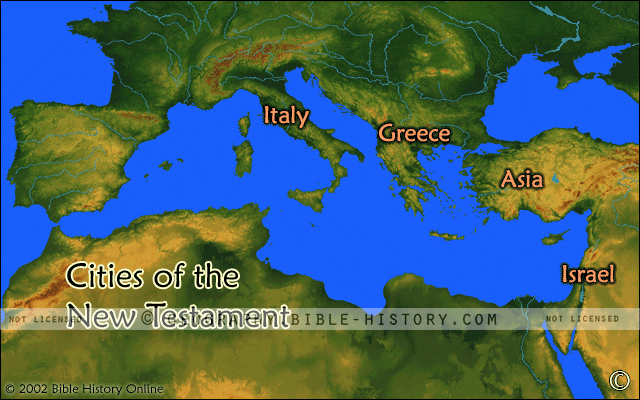
The map of the Cities of the New Testament offers a compelling visual journey into the diverse urban landscapes that played a central role in the events and teachings of the New Testament. These cities were not only geographic locations but also cultural and historical settings where the spread of Christianity and the ministry of Jesus and his disciples took place. Here is a description of this historical map:
Geographical Scope:
This map provides an expansive view of the geographical locations of the cities mentioned in the New Testament. It spans regions in the eastern Mediterranean, encompassing modern-day Israel, Palestine, Turkey, Greece, and other nearby areas.
Key Cities and Landmarks:
The map prominently features cities like Jerusalem, Bethlehem, Nazareth, Capernaum, Bethsaida, Tiberias, and many others that are closely associated with the life and teachings of Jesus, as well as the activities of early Christian communities.
Religious Significance:
This map serves as a visual testament to the religious significance of these cities in the Christian tradition. It highlights the places where significant events from the New Testament took place, including the birth of Jesus in Bethlehem, his ministry in Galilee, and the Last Supper in Jerusalem.
Historical Context:
The map provides historical context for the New Testament cities, including their political, social, and cultural environments during the time of the Roman Empire. It reflects the diversity of populations and religious beliefs in these cities.
Routes and Journeys:
It outlines the routes and journeys of Jesus, his disciples, and early Christian missionaries as they traveled from city to city, spreading the message of Christianity.
Cultural Insights:
Exploring the map allows viewers to gain insights into the culture, society, and daily life of the people living in these New Testament cities. It offers a connection to the customs, traditions, and challenges faced by the early Christian communities.
Religious Communities:
The map may also indicate the locations of early Christian congregations, synagogues, and places of worship, shedding light on the growth of Christianity in these urban centers.
Archaeological Discoveries:
Incorporating markers or references to archaeological discoveries and excavations in these cities can provide insights into the historical accuracy of New Testament accounts.
The map of the Cities of the New Testament invites viewers to explore the geographic tapestry of the New Testament narrative. It allows them to delve into the geography, history, and cultural context of these iconic cities, enriching their understanding of the events, teachings, and early Christian communities that were integral to the New Testament story.